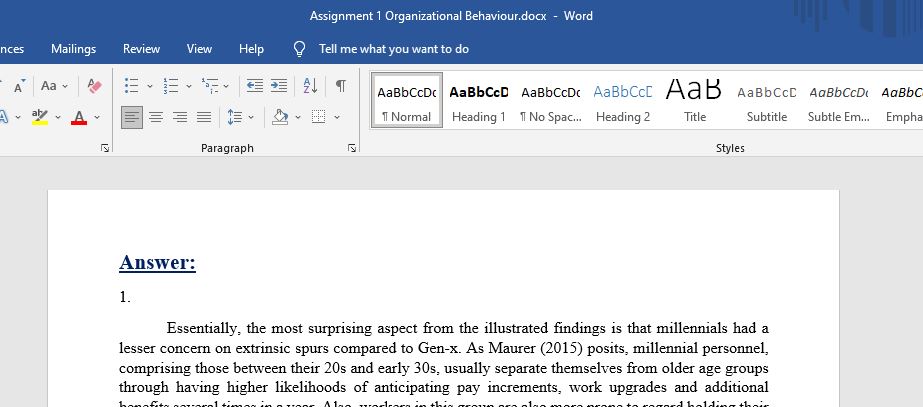Compare the findings described above for Millennials to your own views on Millennial characteristics. What surprises you about the findings? What doesn’t surprise you?
Please read the case “PwC” from Chapter 3 “Organizational Commitment” Page: – 83 given in
your textbook – Organizational behaviour: Improving performance and commitment in the
workplace (6th ed). by Colquitt, J. A., LePine, J. A., & Wesson, M. J. (2019) and Answer the
following Questions:
Assignment Question(s):
1. Compare the findings described above for Millennials to your own views on Millennial
characteristics. What surprises you about the findings? What doesn't surprise you? (1.25 Marks )
(Min words 150-200)
2. If you think about the three types of commitment—affective, continuance, and
normative—which do you think is most changed among Millennials (or twenty-somethings)? In what
way? (1.25 Marks ) (Min words 150-200)
3. Consider all the initiatives and programs PwC uses to inspire employee loyalty. Do most of those
seek to “move the needle” on affective commitment, continuance commitment, or normative
commitment? (1.25 Marks ) (Min words 200)
Part:-2
Discussion question: – Please read Chapter 3 “organizational commitment” Carefully and then
give your answers on the basis of your understanding.
4. Which type of organizational commitment (affective, continuance, or normative) do you think is
most important to the majority of employees? Which do you think is most important to you? (1.25
Marks ) (Min words 200-300)
Important Note: – Support your submission with course material concepts, principles, and theories
from the textbook and at least two scholarly, peer-reviewed journal articles.
Answer preview:

word limit:857
